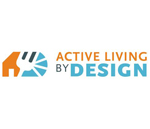| |
ACTIVE LIVING BY DESIGN EVALUATION
Overview: The Active Living by Design (ALbD) project is an evaluation of a national initiative that establishes innovative approaches to increase physical activity through community design, public policies and communications strategies. The evaluation of grantees, ALbD and Robert Wood Johnson Foundation staff and other stakeholders includes assessing the environmental impacts of physical projects and related policy changes; determining the influence of these interventions on physical activity behaviors; documenting the range of interventions implemented across the communities and their associated intended and unintended accomplishments; and identifying strengths and challenges in the process of planning, developing and implementing the interventions. The evaluation will also provide recommendations for building community design initiatives to increase physical activity, including relevant policy and environment changes as well as promotional and programmatic activities.
Purpose: The main goals of the ALbD project are to:
- Assess the impact of active living interventions on environments related to physical activity.
- Provide evidence of the impact of “start-up” resources on the capacity of communities to create change in support of active living.
- Increase understanding of community responses to comprehensive intervention approaches involving policy, environment, programmatic, and promotions strategies.
- Identify strengths and challenges encountered by communities in the planning, development, and implementation of active living interventions.
Partners:
Active Living by Design,
Robert Wood Johnson Foundation,
Saint Louis University School of Public Health
Our Role:
- Gather evidence of intervention planning, development, and implementation activities
- Review and summarize evidence of intervention activities and their accomplishments
- Develop and disseminate summary reports of findings
Population: The ALbD project evaluates 25 diverse communities across the United States, including those with large racial/ethnic minority, child and older adult populations; communities in urban, suburban and rural settings; and low-resource and high-resource communities. Recommendations for building community design initiatives to increase physical activity will focus primarily on environments for children and relatively disadvantaged populations.
Reports:
Case reports
Cross-site report
Publications:
American Journal of Preventive Medicine; the Best Practices supplement
American Journal of Preventive Medicine; the Evaluation supplement
|
|